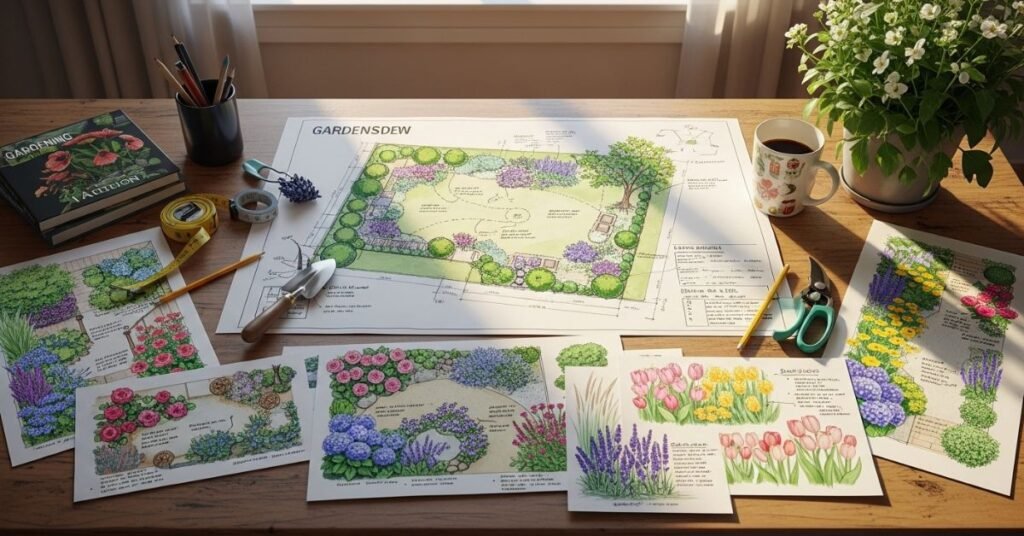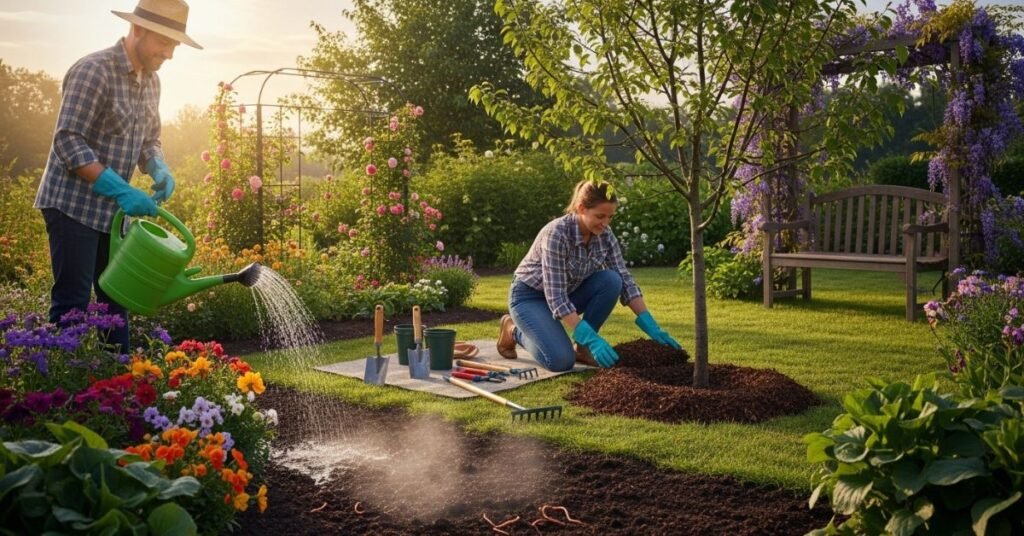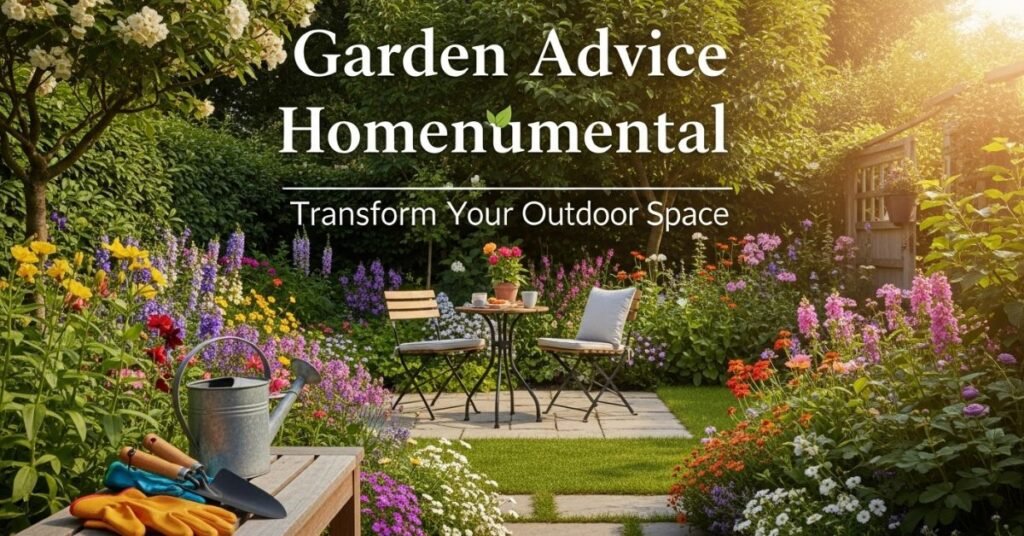Your garden holds the potential to be more than just a patch of grass. It can become a vibrant sanctuary, a productive vegetable patch, or a stunning extension of your home’s living space. Many homeowners dream of creating a monumental outdoor area but feel overwhelmed by where to start. Transforming your garden doesn’t require a professional landscape architect or an unlimited budget. With the right expert advice, you can unlock your garden’s potential and create a space that is both beautiful and functional.
This guide provides a comprehensive roadmap for your garden transformation. We will walk you through everything from the initial planning stages and understanding your local environment to selecting the perfect plants and implementing sustainable practices. Whether you have a sprawling backyard or a compact urban patio, these principles will help you cultivate an outdoor space you’ll love for years to come. Get ready to dig in and turn your vision into a living, breathing reality.
The Foundation of a Great Garden: Planning and Assessment
Before you buy a single plant or lift a single shovel, a successful garden transformation begins with thoughtful planning. This foundational step ensures your efforts and investments yield the results you envision.
Define Your Garden’s Purpose
What do you want from your outdoor space? The answer to this question will guide every decision you make. Consider the primary function you want your garden to serve.
- A Relaxation Retreat: Do you imagine a quiet corner for reading, a serene space with a water feature, or a comfortable seating area for morning coffee? This goal prioritizes privacy, comfort, and calming elements.
- An Entertainment Hub: If you love hosting, you might want a patio for dining, a built-in barbecue area, or an open lawn for games. This design focuses on flow, durability, and social zones.
- A Family-Friendly Playground: For those with children or pets, safety and recreation are key. This could mean a soft lawn, durable plants, and designated play areas.
- A Productive Edible Garden: Are you interested in growing your own food? Your focus will be on creating raised beds or dedicated plots for vegetables, herbs, and fruits.
Your garden can certainly serve multiple purposes. The key is to identify your top priorities to create a cohesive and functional design.
Assess Your Site: Know Your Canvas
Every garden space has a unique set of characteristics. Understanding these environmental factors is crucial for choosing plants that will thrive.
- Sunlight Mapping: Observe your garden throughout the day to map out areas of full sun, partial shade, and full shade. “Full sun” typically means six or more hours of direct sunlight. “Partial shade” is three to six hours, while “full shade” is less than three. This is the single most important factor for plant selection.
- Soil Analysis: Your soil is the lifeblood of your garden. You can perform a simple “squeeze test”: grab a handful of moist soil and squeeze it. If it forms a tight ball that doesn’t crumble, you likely have clay soil. If it feels gritty and falls apart, it’s sandy. If it feels smooth and holds its shape loosely, you have loamy soil—the ideal for most plants. For a more detailed analysis, consider a home soil test kit to check pH levels and nutrient content.
- Climate and Microclimates: Understand your region’s hardiness zone, which tells you the coldest winter temperatures your plants can survive. Beyond this, look for microclimates within your yard. A south-facing wall will be warmer and drier, while a low-lying area might be cooler and damper. These small variations can create unique planting opportunities.
Designing Your Dream Garden: From Layout to Plant Selection

With your purpose defined and your site assessed, you can move on to the creative phase: designing the layout and choosing your plants.
Create a Functional Layout
A good garden design balances beauty with usability. Start with a rough sketch of your yard, marking existing features you want to keep, like mature trees or a patio.
- Create Zones: Based on your garden’s purpose, divide the space into logical zones. You might have a “dining zone” near the house, a “play zone” on a flat, grassy area, and a “quiet zone” in a secluded corner.
- Define Pathways: Think about how you will move through the space. Pathways guide the eye and the foot, connecting different zones. They can be made from materials like gravel, stepping stones, or brick. Curved paths can make a space feel larger and more natural, while straight paths create a more formal look.
- Incorporate Focal Points: A focal point is a feature that draws the eye and adds interest to the landscape. This could be a beautiful specimen tree, a sculpture, a birdbath, or a vibrant container arrangement. A well-placed focal point can anchor a design and create a sense of destination.
The Art and Science of Plant Selection
Choosing plants is often the most exciting part of gardening. To ensure success, select plants that are not only beautiful but also well-suited to your specific conditions.
- Right Plant, Right Place: This is the golden rule of gardening. A sun-loving lavender will not survive in a shady, damp corner, and a moisture-loving fern will scorch in a hot, dry spot. Always check a plant’s light, water, and soil requirements before you buy it.
- Create a Planting Palette: To achieve a cohesive look, limit your color palette. Choose two or three primary colors and use them in repeating patterns throughout the garden. You can add pops of contrasting colors for seasonal interest.
- Vary Texture and Form: A garden with varied plant forms and textures is visually dynamic. Combine plants with different leaf shapes (spiky, round, feathery) and growth habits (upright, mounding, trailing). For example, pair the bold leaves of a hosta with the delicate fronds of a fern and the vertical spikes of a grass.
- Plan for All Seasons: A truly monumental garden offers interest year-round. Select plants that provide beauty in every season. Think spring-flowering bulbs, summer-blooming perennials, shrubs with brilliant fall foliage, and evergreens or trees with interesting bark for winter structure.
Building Your Garden: Soil Preparation and Planting Techniques
The physical work of building your garden is where your plans come to life. Proper preparation and planting techniques give your plants the best possible start.
The Importance of Soil Preparation
Healthy soil is the key to healthy plants. Most garden soils can be improved with the addition of organic matter.
- Amending Your Soil: Compost is the gardener’s best friend. It improves the structure of both clay and sandy soils, adds essential nutrients, and encourages beneficial microbial life. Spread a 2-4 inch layer of compost over your new garden beds and work it into the top 6-8 inches of soil.
- Raised Beds vs. In-Ground Gardens: Raised beds are an excellent option if you have poor native soil, drainage issues, or physical limitations that make bending difficult. They allow you to create the perfect soil mix from scratch. In-ground gardens can be just as productive but may require more initial work to amend the existing soil.
Planting for Success
How you put a plant in the ground can have a major impact on its long-term health.
- Dig the Right Hole: Dig a hole that is two to three times as wide as the plant’s root ball but only as deep. This encourages the roots to grow outwards into the surrounding soil.
- Tease the Roots: If a plant is “root-bound” (the roots are circling tightly in the pot), gently tease them apart with your fingers or a small knife before planting. This encourages them to grow into the new soil instead of continuing to circle.
- Water-In Thoroughly: After placing the plant in the hole and backfilling with soil, water it deeply. This settles the soil around the roots, eliminating air pockets and reducing transplant shock.
Nurturing Your Garden: Watering, Mulching, and Maintenance

Your garden transformation doesn’t end once everything is planted. Consistent care and maintenance will ensure your outdoor space matures into the lush, beautiful haven you envisioned.
Smart Watering Practices
Water is essential for plant life, but too much or too little can cause problems.
- Water Deeply, Less Frequently: Deep watering encourages plants to develop strong, deep root systems that are more resilient to drought. Shallow, frequent watering encourages shallow roots that dry out quickly.
- Water at the Base: Avoid overhead watering, which can promote fungal diseases. Use a soaker hose or drip irrigation to deliver water directly to the soil at the base of the plants.
- The Finger Test: The best way to know if your plants need water is to check the soil. Stick your finger a few inches into the soil near the plant’s base. If it feels dry, it’s time to water.
The Magic of Mulch
Mulch is a layer of material applied to the surface of the soil. It is one of the most beneficial things you can do for your garden.
- Benefits of Mulching: Mulch helps retain soil moisture, suppresses weeds, regulates soil temperature, and adds organic matter to the soil as it breaks down.
- Types of Mulch: Organic mulches like shredded bark, wood chips, or straw are excellent choices. Apply a 2-3 inch layer around your plants, being careful not to pile it directly against the stems, which can cause rot.
Ongoing Maintenance for a Thriving Garden
A garden is a living system that evolves. Regular maintenance keeps it looking its best.
- Weeding: Remove weeds as soon as you see them. They compete with your plants for water, nutrients, and light. A thick layer of mulch will significantly reduce the number of weeds.
- Pruning: Pruning shapes plants, removes dead or diseased wood, and can encourage more flowers or fruit. The right time and method for pruning vary by plant, so do a little research before you start cutting.
- Fertilizing: If you have prepared your soil well with compost, you may not need to fertilize much. For heavy feeders like vegetables or roses, a slow-release organic fertilizer applied in the spring is usually sufficient.
Create Your Monumental Outdoor Space
Transforming your garden is a journey, not a weekend project. It is a deeply rewarding process that connects you with nature and enhances your quality of life. By starting with a clear plan, understanding your unique environment, and choosing the right plants, you are setting yourself up for success. Embrace the process, learn as you go, and don’t be afraid to experiment.
The expert advice provided here is your guide to creating a garden that is not just beautiful but truly monumental—a personal sanctuary that reflects your style and meets your needs. Your dream outdoor space is within reach.
Ready to start your garden transformation? Begin by mapping your sunlight and testing your soil this weekend. A small first step is all it takes to start growing the garden you’ve always wanted.


